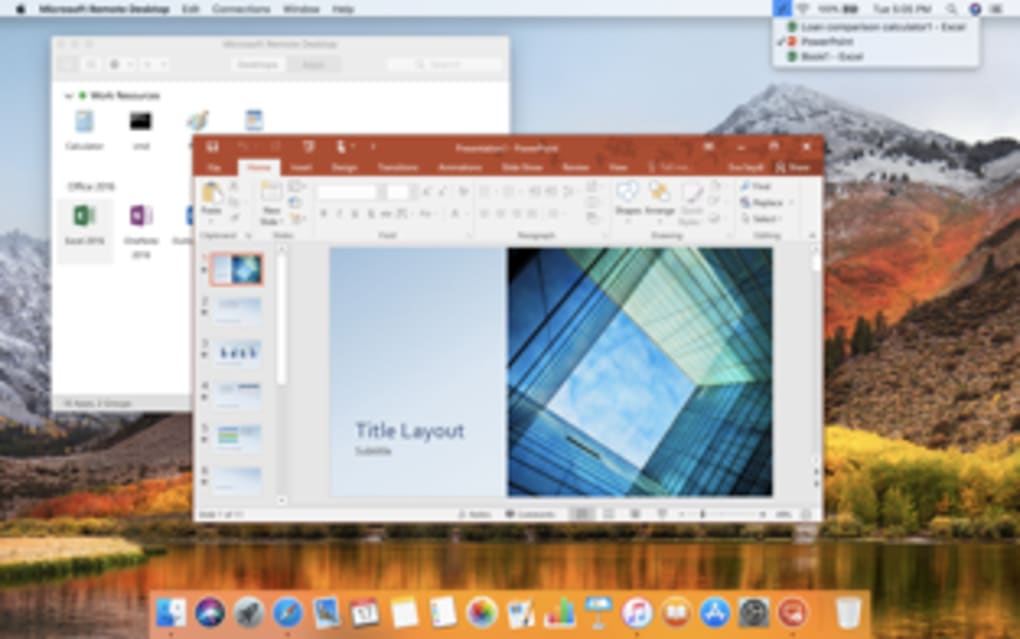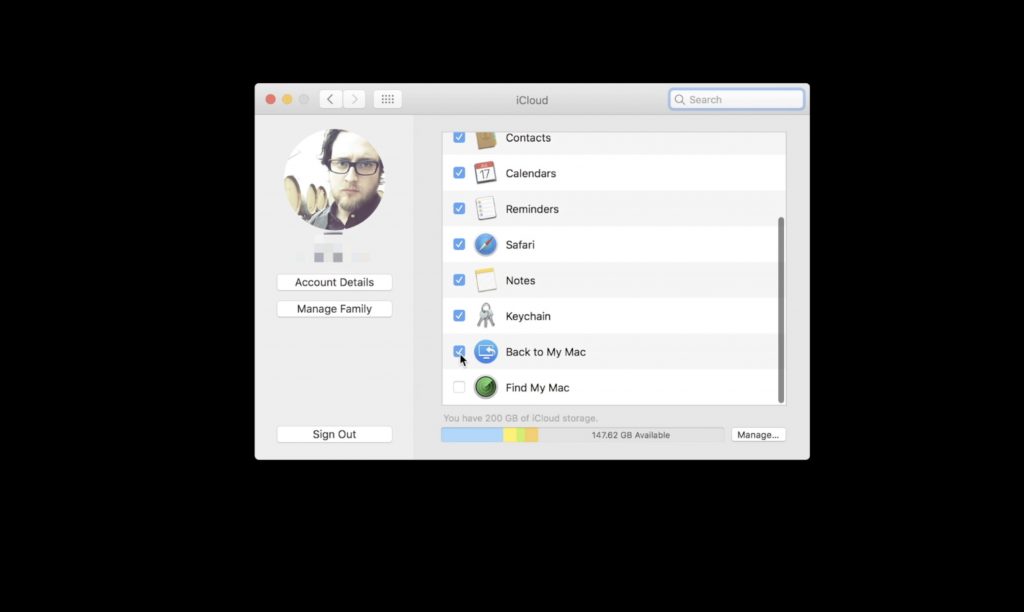- Remote Access Mac Desktop From Windows
- Remote Access Pc To Mac
- Remote Access Mac Desktop From Ipad
- Remote Access For Mac Computers
You turn on your MacBook and feel that something is wrong: some files have disappeared, or new files were added. You wonder if someone has been watching your computer.
So, how to tell if someone is remotely accessing your MacBook? You need to check your logs, verify that no new users were created, make sure that remote login, screen sharing and remote management are disabled, and no spyware is running on your computer.
First things first. If you suspect that someone is controlling your laptop and if there is a chance that they watching you thru the webcam immediately apply a cover on laptop’s webcam. You can find my favorite webcam covers here.
It also supports converting SHN files and VOC files. Bigasoft audio converter for mac.

There're two ways: you can allow remote login to your Mac from another computer, or allow others to access your computer using Remote Desktop (it's available from the App Store). Allow remote login to your Mac from another computer. For devices using the same macOS, you can allow remote Mac login using a Secure Shell (SSH). Manage Mac computers on your network with Apple Remote Desktop (ARD). Learn more with these resources.
Pro-tip: While it is certainly possible that someone is remotely accessing your Mac, chances are higher that you caught a virus. Click here to find out the best antivirus programs for Mac.

- On your Mac, click the Finder icon in the Dock to open a Finder window, then click Network in the Locations section of the sidebar. If no items appear in the Locations section of the sidebar, hold the pointer over the word Locations, then click Show. In the Finder window, double-click the computer you want to connect to, then click Connect As.
- For some Mac users, remote access software became a category to consider when Apple removed Back to My Mac from macOS Mojave, and it was completely turned off on July 1 of this year.
- Setting Up Remote Access. Remote access requires that you install an “agent” on the machine you.
What is remote access and how is it configured on MacBooks?
There are three ways to access MacOS remotely: allow remote logins from another computer, enable Screen Sharing or allow access by using Remote Desktop. Anytoiso for mac. Both ways are legitimate, but if you don’t remember doing any of them you need to know how to turn on and off those possibilities.
Remote login to MacOS
Computers that run MacOS as an operating system can log in to your Mac using Secure Shell (SSH). Steps to enable remote login are the following:

- Go to System Preferences. You can get there by clicking on the apple icon on the left of the top bar. After you clicked on apple icon you will see a drop-down menu where you should click on System Preferences menu item.
- Find Sharing folder and double click. Click on Remote Login checkbox on the left.
- Now you have the option to allow access either for all user or only specific users.
Once Remote Login is enabled then users with access can use SSH to log in and browse your computer’s contents.
Access to Mac screen using Screen Sharing
If you need help from IT to make changes on your MacBook or maybe you are collaborating on a project and want to share your screen you can enable Screen Sharing. Steps to enable as follows:
- Go to System Preferences.
- Find Sharing folder and double click. Click on Screen Sharing checkbox on the left.
- Allow access either for all user or only specific users.
Now on another Mac (from which you want to access to your Mac) start Screen Sharing app. You can start it by clicking Command and Space buttons. In a popup form type Sharing and hit Enter. Type your computer name. In my case, I had to type in “dev-pros-MacBook-Pro.local”.
A new window will pop up with the shared screen of another computer. Now you can control the screen.
Remote Desktop with Remote Management
Finally, it is possible to login to a computer with MacOS by enabling Remote Desktop. Steps to enable as follows:
- Go to System Preferences.
- Find Sharing folder and double click. Click on Remote Management check box on the left.
- Allow access either for all user or only specific users.
- There will be different Sharing options where you can fine-tune the type of access to allow: observe, change settings, delete, copy and even restart the computer.
Remote Access Mac Desktop From Windows
Now you can access this Mac from Apple Remote Desktop – it’s an application you can buy from Apple Store and at the time of writing it’s cost was $79.99.
Doulci activator download for mac. Even though Apple has worked hard to improve protection on its devices.
If your Mac is being monitored, it will show this image (two rectangles) in the top right-hand corner near your computer time:
When that symbol appears, you will be able to tell if you are being monitored. You can also disconnect the viewer by clicking on Disconnect option:
You can also click on “Open Sharing Preferences…” which will open Sharing folder in System Preferences.
Since the question you had was if someone remotely accessing your computer then the chances are that you don’t need any of sharing capabilities mentioned above.
In this case, check all options on Sharing folder under System Preferences to make sure that nobody is allowed to access it and turn off (uncheck) all options.
Verify if new users were created
As we’ve seen already remote login or sharing options require assigning access roles to the local users. If your system was hacked it is very likely that the hacker has added a new user to access it. To find out all users in MacOS perform the following steps:
- Start Terminal app by either going to Applications and then Utilities folder or clicking Command and Space and typing Terminal in the popup window.
- In the Terminal window type:
On my laptop it listed dev1, nobody, root and daemon.
If you see the accounts, you do not recognize then they probably have been created by a hacker.
In order to find when the user account was used to log in last time type the following command into the Terminal:
last
For each account, MacOS will list the times and dates of logins. If the login to any of the accounts happened at an abnormal time, it is possible that a hacker used a legitimate account to log in.

Check the logs
It may be useful to check the system logs for any possible access issues.
In order to find a system log, click on Go option in the top menu or simultaneously click Shift, Command and G. In the “Go to Folder” popup type: /var/log and hit Enter.
Now find system.log file and scan for word sharing. For instance, I found following screen sharing log entries:
These were log entries when someone logged in to my system remotely:
Check for spyware
If you are still suspecting that spyware is running on your machine you can use a third party application like Little Snitch which monitors applications, preventing or permitting them to connect to attached networks through advanced rules. Setting up the rules for Little Snitch, however, could be complicated.
One of the common spyware applications is a keystroke logger or keylogger. Keyloggers used to be apps that record the letters you type on the keyboard, but they significantly in last years. Suffice to day that keyloggers can take screenshots every 30 seconds or even track your chat activity, including the messages sent to you.
I believe that keyloggers are much greater security threat because they are easier to install and the powerful features they offer. Check my article about keyloggers here: How to know if my Mac has a keylogger
Security Best Practices
1.Change passwords regularly
One thing you should immediately if you are suspecting that someone is logging to your system is to change your password. And the password should be complex enough so that other people wouldn’t be able to guess it. This means avoiding using things like birthdate, first or last name or relatives, house or apartment number, etc. As a rule of thumb the password must be long enough (8 – 32 characters) and include at least 3 of the following character types:
- Uppercase letter (A-Z)
- Lowercase letter (a-z)
- Digit number (0-9)
- Special characters such as ~!@#$%^&*
2.Enable Security Updates by clicking on “Automatically keep my Mac up to date” in Software Update folder in System Preferences.
3. Install Antivirus. I received a lot of emails where people described suspicious activity on their Macs. I found that in about 60-70% cases, the culprit was malwareand not someone breaking into the computer. It’s a myth that Macs don’t get viruses. If you need proof check the next article I wrote after testing 12 antivirus programs after injecting 117 malware samples on my Mac:
Discover power and productivity in seamless, secure, and super-fast connections.
Remote Access & Management
For individuals, small businesses and IT professionals
Buy NowLearn about Pro and Central
Remote Support On-Demand
For IT Professionals, help desks & technicians
Learn more about Rescue
The #1 most-reliable remote access and support solutions that keep your business running no matter where you’re working.
Work from any location and maintain day-to-day operations with LogMeIn Pro’s secure, reliable, and easy-to-use remote access

Stay fully connected and productive even away from the office.
Learn more about Pro
- Securely access your computer desktop as if you were sitting in front of it
- Store, share, and collaborate on files with one click
- Conveniently print documents from a remote computer to the nearest local printer
- Enjoy complimentary access to LastPass Premium to store all your passwords in a secure password vault
Reliable Remote Monitoring and Management for your ever-changing IT environment
Enable your employees to work from home and keep your business running smoothly with robust security features, task automation, and the most reliable remote access.
Learn more about Central
- Implement fast, secure, best-in-class Remote Access
- Automate routine IT tasks to increase productivity and reduce costs
- Mitigate risk of cyber threats with built-in LogMeIn Antivirus powered by Bitdefender and patch management
- Gain better visibility and control over your endpoint infrastructure with advanced reporting
Solve customer issues on-demand
Wherever your end users are, solve their toughest issues fast with secure, reliable remote support that scales.
Learn more about Rescue
- Multi-platform support for users across PC, Mac, iOS, and Android devices
- Full customization and administration controls that lets you tailor Rescue to your company’s processes
- Enterprise-grade security measures, including TLS 1.2 transport security with AES-256-bit encryption
One company, limitless possibilities.
With a platform that supports tens of millions of daily users, over a billion customer interactions and twenty billion voice minutes per year, LogMeIn is trusted by companies of every size to create meaningful connections.
GoToConnect
The Jive phone system and GoToMeeting virtual meeting software have come together in one powerful, unified product.
Bold360
A conversational chatbot and virtual customer assistant solution that transforms the way you engage with your customers.
Remote Access Pc To Mac
LastPass
Stop wasting time writing down passwords. One master password rules them all and keeps the rest locked up in a secure vault.
GoToMeeting
The trusted online meeting software for millions to communicate and collaborate on any device, from anywhere.
Remote Access Mac Desktop From Ipad
Director of Café Technology, Au Bon PainRemote Access For Mac Computers
Read the full story